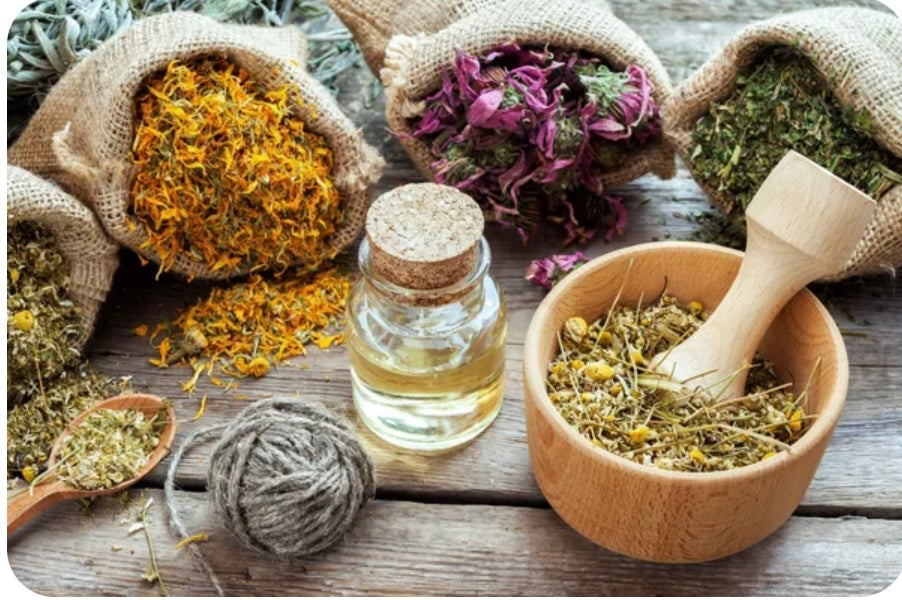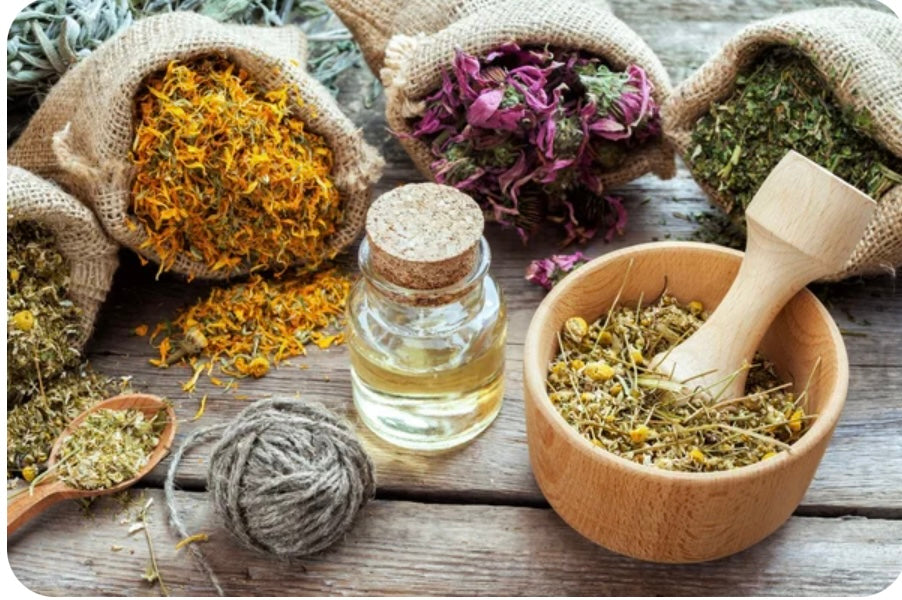SKU:
Mugwort Herb Organic
Mugwort Herb Organic
Super Deals
Ends: Jul 9, 11:59 PM PT
Botanical Name: Artemisia vulgaris
Common Names: Common mugwort, sailor's tobacco, felon herb
WHAT IS MUGWORT USED FOR?
There’s extensive anecdotal use on mugwort for thousands of years, and even been speculated to be one of the first cultivated plants in ancient times. Mugwort was classically used as an aromatic bitter to ease digestion and relieve gas, cramps, and digestive imbalances overall. It has been used ceremonially by Native Americans, in Traditional Chinese Medicine and Ayurveda. It’s classically used as a smudging herb to clear the space, as a smoke, and as a tea for dreaming. Mugwort has long been used to induce vivid dreams, astral projects, and divinations of the future, as it was widely considered to have magical potency.
The herb is quite complex with over 75 unique chemicals that have been identified. When used internally, it supports digestion and has relaxing properties. One of the major uses is in Korean, Japanese and Chinese traditional in the practice of Moxibustion; The herb can be placed directly on the skin, attached to acupuncture needles, or rolled into sticks and waved gently over the area to be treated. In all instances, the herb is ignited and releases heat. Not only is it the herb that is believed to have healing properties in this manner, but also the heat released from the herb in a precise area. There have been published clinical trials of this technique
Active Constituents of Mugwort
1,8 Cineole, Alpha Pinene, Alpha Thujone, Ascorbic Acid, Beta Carotene, Beta Sitosterol, Calcium, Chromium, Copper, Iodine, Iron, Niacin, Potassium, Quercetin, Riboflavin, Thiamin, Zinc
Disclaimer
This information in our Herbal Reference Guide is intended only as a general reference for further exploration, and is not a replacement for professional health advice. This content does not provide dosage information, format recommendations, toxicity levels, or possible interactions with prescription drugs. Accordingly, this information should be used only under the direct supervision of a qualified health practitioner such as a naturopathic physician.
*Organic
Payment & Safety
Ensure secure transactions and peace of mind with our trusted payment methods. Your safety is our priority, we employ advanced security measures to protect your personal information and sensitive data.
Do you need more details? Visit our FAQ's or Contact us
Super Deals
Ends: Jul 9, 11:59 PM PT
Couldn't load pickup availability
Botanical Name: Artemisia vulgaris
Common Names: Common mugwort, sailor's tobacco, felon herb
WHAT IS MUGWORT USED FOR?
There’s extensive anecdotal use on mugwort for thousands of years, and even been speculated to be one of the first cultivated plants in ancient times. Mugwort was classically used as an aromatic bitter to ease digestion and relieve gas, cramps, and digestive imbalances overall. It has been used ceremonially by Native Americans, in Traditional Chinese Medicine and Ayurveda. It’s classically used as a smudging herb to clear the space, as a smoke, and as a tea for dreaming. Mugwort has long been used to induce vivid dreams, astral projects, and divinations of the future, as it was widely considered to have magical potency.
The herb is quite complex with over 75 unique chemicals that have been identified. When used internally, it supports digestion and has relaxing properties. One of the major uses is in Korean, Japanese and Chinese traditional in the practice of Moxibustion; The herb can be placed directly on the skin, attached to acupuncture needles, or rolled into sticks and waved gently over the area to be treated. In all instances, the herb is ignited and releases heat. Not only is it the herb that is believed to have healing properties in this manner, but also the heat released from the herb in a precise area. There have been published clinical trials of this technique
Active Constituents of Mugwort
1,8 Cineole, Alpha Pinene, Alpha Thujone, Ascorbic Acid, Beta Carotene, Beta Sitosterol, Calcium, Chromium, Copper, Iodine, Iron, Niacin, Potassium, Quercetin, Riboflavin, Thiamin, Zinc
Disclaimer
This information in our Herbal Reference Guide is intended only as a general reference for further exploration, and is not a replacement for professional health advice. This content does not provide dosage information, format recommendations, toxicity levels, or possible interactions with prescription drugs. Accordingly, this information should be used only under the direct supervision of a qualified health practitioner such as a naturopathic physician.
*Organic
Payment & Safety
Ensure secure transactions and peace of mind with our trusted payment methods. Your safety is our priority, we employ advanced security measures to protect your personal information and sensitive data.
Do you need more details? Visit our FAQ's or Contact us


